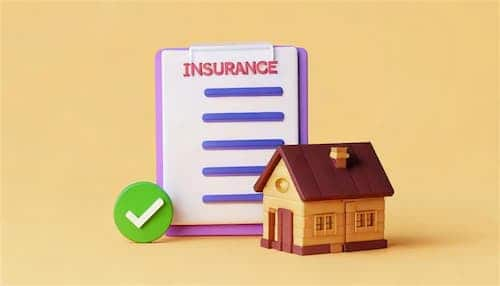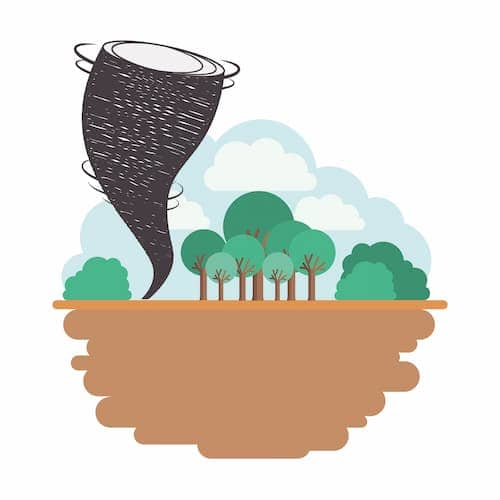How to file a winter storm damage insurance claim
The claims process will go more smoothly if you follow all of the adjuster's instructions and provide documentation in a timely manner.
Robin Olson, Senior Research Analyst at the IRMI (International Risk Management Institute) advises homeowners to follow these steps to file a claim after a storm:
- File your claim as soon as possible- don’t wait. Document your phone call with the insurance agent. Take notes regarding your next steps.
- Perform temporary repairs - if it’s safe to do so. This will prevent further damage. Board up windows, put up tarps to keep water out.
- Keep a claim log - noting the dates and each person you speak to during the insurance claims process. This helps if you run into any issues along the way.
- Take pictures and build up an inventory list of damaged items - the more documentation the better.
- Don’t forget your additional living expenses - if you can’t stay at your house and must go to a hotel or other temporary shelter, keep receipts. Your insurance company will reimburse you for the hotel and food and other needs.
- Check first before discarding property - don’t throw anything away. The insurance company might want to see proof of the damaged items. If you must remove debris for safety reasons, take pictures.
- Find reputable, licensed contractors - do your research and find licensed, bonded contractors. Get everything in writing.
- Be prepared to negotiate - you don’t necessarily have to accept the first offer you get. If your repair estimates exceed the amount your insurance company says they’ll pay out, you can try to appeal this.
Immediate actions after storm damage
Immediately after winter storm damage to your home, take as many pictures and videos as possible of the immediate situation. Then walk around the property and put up tarps to cover open patches of roof or siding, board up broken windows and shut off water sources if you’re experiencing a leak. If tree branches are hanging ready to fall, trim where it is safe to do so to prevent more from falling. This will stave off further damage and is an important component of making sure your claim goes smoothly.
Although water damage as a result of a storm is generally covered, if you leave your home exposed to the elements and water gets in, and then water turns into a mold problem, your insurance carrier may deny your claim. The more time that passes, the harder it is to tell what damage was from the storm itself and what happened after.
Filing a claim
Most insurance companies have a 24-hour hotline you can call to file your claim. You may also be able to file on a mobile app, or start the claims process online.
Whatever method you choose to report your claim, don’t wait. After a storm, insurance companies will be inundated with claims. You want to get yours started as soon as possible since there might be a backlog.
Start getting repair estimates quickly; contractors will also be busy. The quicker you file your claim, the quicker you start getting the checks to pay them.
Even though you technically might have a year or more to file a claim after a winter storm, don’t wait that long.
Repairing your property
Repairs might be slow after a winter storm, as some can’t be completed until the weather improves. However, you can expect the following process:
- Do minor repairs yourself right after the storm, enough to prevent further damage
- After reporting your claim to the insurance company, get repair estimates from reputable contractors
- Submit the quotes to your carrier, which will issue a partial check so you can pay the workers to start the repairs
- Once repairs have started, keep all receipts, invoices and documentation
- Your insurance carrier will issue a second check once repairs are complete and inspection is done
Repairs to the structure of your home are covered by the dwelling portion of your home insurance. It’s based on the replacement cost of rebuilding your home from scratch. It pays out based on current prices for labor and materials. You have predetermined dwelling limits on your policy, and it’s a good idea to review them every year.
For your personal property, you will generally be reimbursed at actual cash value (ACV), which is a depreciated value of your items. This is standard, unless you opted for replacement cost coverage on your belongings ahead of time, or purchased an endorsement to cover high-ticket items.
How long do you have to file a claim for winter storm damage?
Depending on your insurance carrier and the state regulations in your area, you sometimes have up to a year or two to file your claim.
This is not recommended, however. The more time that passes, the harder it is to prove to your insurance carrier that the damage was from the storm and not from other causes. Also, you want repairs to be done as soon as possible to prevent further issues.
Your insurance adjuster will give you important deadlines to meet once the claim is filed, but it’s best to start the process as soon as possible.
How to make sure you get the settlement you deserve after a winter storm
To make sure you get a fair settlement on your insurance claim after a winter storm, follow these steps.
- Document all of the damage. Make sure you have photos of everything that was damaged before any steps are taken to clean up.
- Consider hiring a public adjuster. You will be assigned an insurance adjuster by the insurance company who works on behalf of the company. You may want to hire a public adjuster, especially if it’s a lot of damage, who will help you with the claims process. “Be sure and do your research so that you are working with a fair and reputable public adjuster. Check their license and credentials," says Matt Banaszynski, CEO of the Independent Insurance Agents of Wisconsin.
- Stay on top of documentation. Responding quickly to adjuster requests will ensure things go smoothly.
- Negotiate if necessary. If the settlement is too low, you can negotiate. "Just remember, the insurer will not go above the limits available on your policy. Your insurance agent can help advocate on your behalf with the adjuster and/or the insurance company, says Banaszinski. Public adjusters can also help with this process. “The majority of public adjusters will negotiate with the policyholder and can be helpful in the right situations,” he says. "While the public adjuster provides expertise, remember that most of the time the decision regarding settlement offers ultimately rests with you. Stay informed and retain control.”

Source:
- FEMA. "FEMA snow assistance fact sheet." Accessed November, 2024
Frequently asked questions about winter storm damage claims
Does FEMA offer assistance for winter storm damages?
FEMA provides limited assistance when a disaster has been declared after a winter storm, including for snow clearing, de-icing and sanding of roads. FEMA disaster assistance is available to individuals if the storm is a presidentially-declared disaster.
What is an ice dam on a roof?
Ice dams form when heavy snow accumulation melts during the day and then refreezes overnight, forming a ridge that prevents snow from falling off the roof. Ice dams can cause serious damage.







